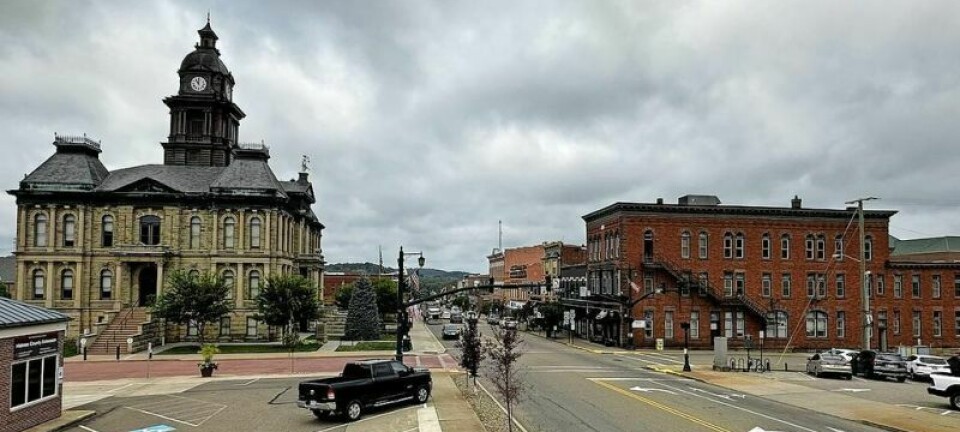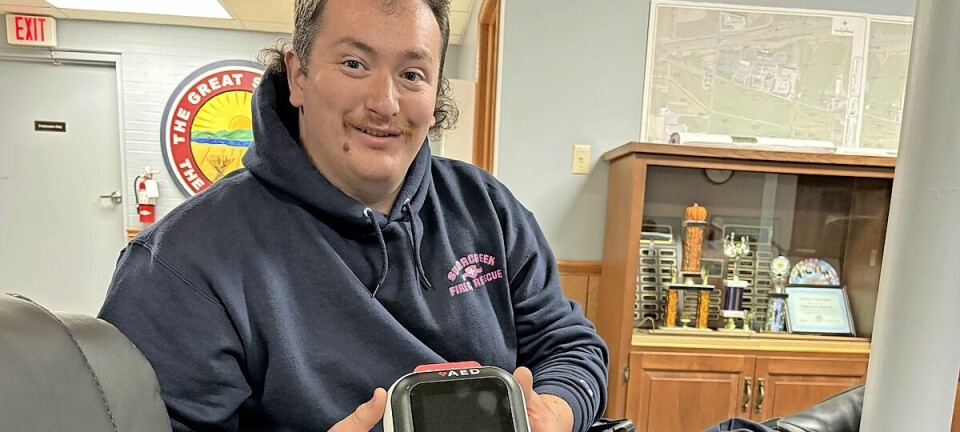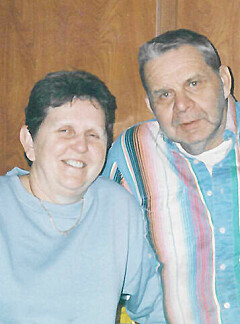Tusco-Volt debuts at Kent State Tuscarawas
The students and instructor pose for a photo with the Tusco-Volt. Pictured are Chris Miller, left, of New Philadelphia, John Meek of Gnadenhutten, Alex Denney of Dover, Samuel Gross of North Jackson, instructor David Schlosser and Michael Leshon of Bolivar.
Teri Stein
The debut of the electric-powered Tusco-Volt All-Terrain Vehicle is a testament to the ingenuity and creativity of a team of students studying engineering technology at Kent State University at Tuscarawas.
The Tusco-Volt was a gas-powered ATV that was converted to electric power by the students. The vehicle has a top speed of 25 mph, a battery run time of 30 minutes and can carry a 200-pound rider. The project also includes accessories such as a battery gauge, LED and running lights, and a horn.
The students involved in the project were Chris Miller of New Philadelphia, Michael Leshon of Bolivar, John Meek of Gnadenhutten and Alexander Denney of Dover, all studying mechanical engineering, as well as Samuel Gross of North Jackson, who is studying electrical engineering technology. The instructor of the engineering technology class is David Schlosser, IDSA.
“We got it down to the frame and completely stripped it. Then this class basically started from scratch with an electric motor and a controller from a golf cart of all things,” Schlosser said in presenting the project to the public.
The project was put together over the course of 16 weeks and 350 hours of work time.
“Over the course of the semester, they worked on problem-solving, team-building. They gained experience with tools. You are going to see some pretty amazing stuff here. There was some machining and design that was put into this,” Schlosser said.
Schlosser also felt fortunate to have support from local organizations for the project. The sponsors included Action Extreme Sports, Tusky Valley High School - Project Lead the Way, Allied Machine and Engineering, Willandale Golf Carts, FoxFury Lighting Solutions, ST Engineering Hackney Kidron, Tusco Display, and Denney Plastics.
“What makes this class really fun is you have dedicated people who really are passionate about what they do, and we enjoy generous, fanatical support from the public and from industry that helps us out with what we need,” Schlosser said. “The project cost about $1,700, and that doesn’t reflect the time and hours that other companies generously gave us.”
The students put together a proposal at the beginning of the semester on what they needed the project to do to be considered a success.
“Everything on the requirement sheet that they filled out back in January was either met or exceeded by the end of the semester,” Schlosser said.
The students were enthusiastic from the beginning.
“When we first started, it was just a chassis,” Denney said. “We kind of had to start with nothing and make something out of nothing. There were no batteries, no motor, and there were no tools, but it was really the experience of building something like this that had impact.”
The students had to start brainstorming what they needed to do and deciding who was going to do what.
“A big part of the day was spent researching to figure out how to make the motor run,” Leshon said.
The students learned a lot of the skills they needed to complete the project on the fly, as they worked to reconfigure everything including the making of one-of-a-kind parts. They machined the parts and made sure everything fit.
“This is a fairly large project, so there was definitely a lot of hands-on fabrication that will translate over to real-world jobs once we get our degrees and move on,” Leshon said.
There was another first for the project. It was the first time one of Schlosser’s classes used text as a means of communication between the students instead of message boards. Schlosser felt it worked well, and if a student had an idea at 12:30 a.m., they could easily get that idea out to the others.
The students agreed changing the throttle from a pedal throttle on a golf cart to one that would work well on an ATV was the most challenging part of the project. It would have been easy if they had the budget to purchase a throttle, but they needed to work with what they had.
Their biggest constraint was the budget.
“Staying within the budget was hardest because you can go on the internet and find a $1,000 controller and motor and get the latest and fanciest parts, but in the real world, normally you don’t get that option,” Miller said. “You don’t have an unlimited budget either. We had to reuse a lot of parts from the golf cart. That helped us stay within the budget, and that’s a good real-world lesson because project management budget is always a concern.”
Using their creativity to make what they needed helped them stay on budget.
The students found one of the biggest take-aways from the project was learning the different aspects of engineering. The Tusco-Volt will remain at the Tuscarawas campus to inspire future students.
Paul Dykshoorn, engineering technology program director, was impressed with the project including the finishing touches.
“The decorations are awesome, the way they did the Kent State decorations on it. That was a nice touch,” Dykshoorn said. “It was originally red, and they wanted to make it blue. We actually had to research what kind of paint would stick to that kind of plastic.”
The students made sure the project decals said Kent State University Tuscarawas.
“They wanted to let everybody know that this is a local project, this is our people and our students working on this,” Dykshoorn said.
Dykshoorn found the project advanced for the sophomore level. “I’m really quite proud of the team,” he said.

















































